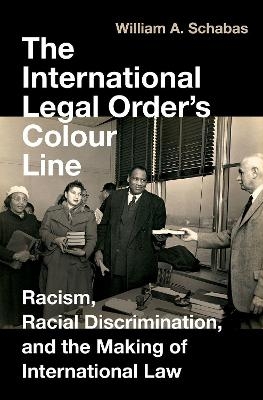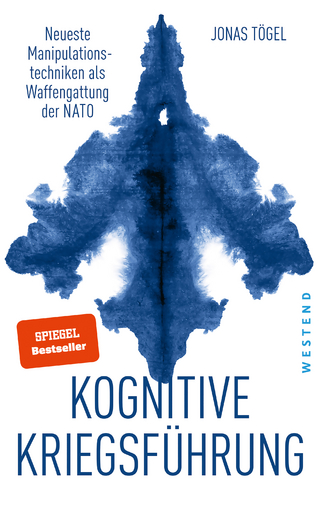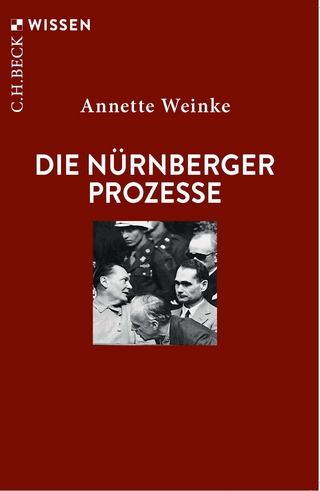
The International Legal Order's Colour Line
Racism, Racial Discrimination, and the Making of International Law
Seiten
2023
Oxford University Press Inc (Verlag)
978-0-19-774447-5 (ISBN)
Oxford University Press Inc (Verlag)
978-0-19-774447-5 (ISBN)
The International Legal Order's Colour Line charts the development of regulation on racism and racial discrimination in international law. Outlining landmark resolutions and their development, the book challenges the narrative that human rights are a creation of the Global North while demonstrating the decisive contribution of the Global South.
Prior to the twentieth century, international law was predominantly written by and for the 'civilised nations' of the white Global North. It justified doctrines of racial inequality and effectively drew a colour line that excluded citizens of the Global South and persons of African descent from participating in international law-making while subjecting them to colonialism and the slave trade.
The International Legal Order's Colour Line narrates this divide and charts the development of regulation on racism and racial discrimination at the international level, principally within the United Nations. Most notably, it outlines how these themes gained traction once the Global South gained more participation in international law-making after the First World War. It challenges the narrative that human rights are a creation of the Global North by focussing on the decisive contributions that countries of the Global South and people of colour made to anchor anti-racism in international law.
After assessing early historical developments, chapters are devoted to The League of Nations, the adoption and implementation of the International Convention on the Elimination of All Forms of Racial Discrimination, the debates within UNESCO on the notion of race itself, expansion of crimes against humanity to cover peacetime violations, as well as challenges to apartheid in South Africa. At all stages, the focus lies on the role played by those who have been the victims of racial discrimination, primarily the countries of the Global South, in advancing the debate and promoting the development of new legal rules and institutions for their implementation. The International Legal Order's Colour Line provides a comprehensive history and compelling new approach to the history of human rights law.
Prior to the twentieth century, international law was predominantly written by and for the 'civilised nations' of the white Global North. It justified doctrines of racial inequality and effectively drew a colour line that excluded citizens of the Global South and persons of African descent from participating in international law-making while subjecting them to colonialism and the slave trade.
The International Legal Order's Colour Line narrates this divide and charts the development of regulation on racism and racial discrimination at the international level, principally within the United Nations. Most notably, it outlines how these themes gained traction once the Global South gained more participation in international law-making after the First World War. It challenges the narrative that human rights are a creation of the Global North by focussing on the decisive contributions that countries of the Global South and people of colour made to anchor anti-racism in international law.
After assessing early historical developments, chapters are devoted to The League of Nations, the adoption and implementation of the International Convention on the Elimination of All Forms of Racial Discrimination, the debates within UNESCO on the notion of race itself, expansion of crimes against humanity to cover peacetime violations, as well as challenges to apartheid in South Africa. At all stages, the focus lies on the role played by those who have been the victims of racial discrimination, primarily the countries of the Global South, in advancing the debate and promoting the development of new legal rules and institutions for their implementation. The International Legal Order's Colour Line provides a comprehensive history and compelling new approach to the history of human rights law.
William A. Schabas is professor of International Law at Middlesex University London and distinguished visiting faculty at Sciences Po in Paris. He further holds the titles of professor emeritus at Leiden University and University of Galway. He is honorary chairman of the Irish Centre for Human Rights, and was a member of Sierra Leone Truth and Reconciliation Commission (2002-2004), chairman of Human Rights Council fact-finding commission on the Gaza conflict (2014-2015), and prepared quinquennial reports on the death penalty for the United Nations Secretary-General in 2020, 2015, and 2010. He is also an Officer of the Order of Canada, a member of Royal Irish Academy, and holds several honorary doctorates.
| Erscheinungsdatum | 26.07.2023 |
|---|---|
| Verlagsort | New York |
| Sprache | englisch |
| Maße | 163 x 242 mm |
| Gewicht | 785 g |
| Themenwelt | Geschichte ► Teilgebiete der Geschichte ► Militärgeschichte |
| Recht / Steuern ► EU / Internationales Recht | |
| Recht / Steuern ► Öffentliches Recht ► Völkerrecht | |
| Recht / Steuern ► Rechtsgeschichte | |
| Sozialwissenschaften ► Ethnologie | |
| Sozialwissenschaften ► Soziologie | |
| ISBN-10 | 0-19-774447-8 / 0197744478 |
| ISBN-13 | 978-0-19-774447-5 / 9780197744475 |
| Zustand | Neuware |
| Informationen gemäß Produktsicherheitsverordnung (GPSR) | |
| Haben Sie eine Frage zum Produkt? |
Mehr entdecken
aus dem Bereich
aus dem Bereich
neueste Manipulationstechniken als Waffengattung der NATO
Buch | Softcover (2023)
Westend (Verlag)
24,00 €
Deutschlands Schwäche in der Zeitenwende
Buch | Softcover (2023)
C.H.Beck (Verlag)
18,00 €


